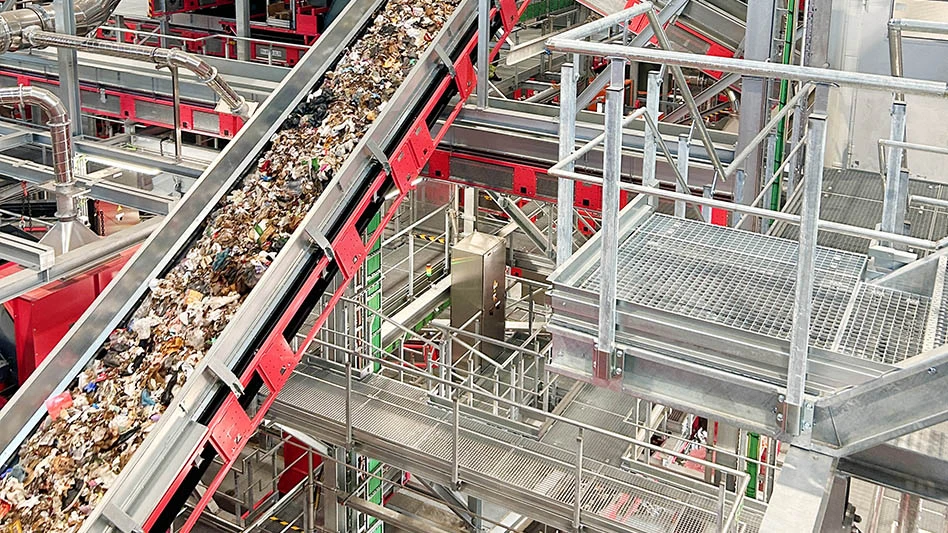
Photo provided by QED Environmental Systems
Landfill operators are required to capture and control landfill gas as part of the U.S. Environmental Protection Agency’s (EPA) New Source Performance Standards (NSPS). These rules are focused on reducing emissions of methane-rich landfill gas from new, modified and reconstructed municipal solid waste (MSW) landfills. The regulations require that landfills perform surface emission monitoring (SEM) to identify potential emission exceedances.
Several technologies are used for conducting SEM, including flame ionization detectors (FIDs) and photoionization detectors (PIDs). QED Environmental Systems offers a new tunable diode laser absorption spectroscopy (TDLAS) technology that offers some advantages when compared with FIDs and PIDs.
EPA’s NSPS regulations require MSW landfills to operate a gas control and collection system to minimize methane emissions. The regulations (40 CFR part 60 subpart XXX) require that landfills perform quarterly SEM to identify potential emissions greater than 500 parts per million by volume (ppmv). They must also ensure that their collection and control system is operating properly. If an exceedance is detected, the landfill must take whatever steps are necessary to correct the issue.
The instruments that can be used for this quarterly SEM are regulated by EPA’s Method 21 – Determination of Volatile Organic Compound Leaks. Method 21 requires that the instrument must:
- respond to the compounds being processed, such as methane;
- measure the leak definition concentration specified in the regulation;
- have an instrument scale that is to +/- 2.5 percent of the specified concentration;
- come with an electrically driven pump to ensure that the sample is delivered to the detector at a constant flow rate;
- come with a probe or probe extension for sampling not to exceed 1.25 inches in outside diameter, with a single opening for admission of the sample;
- be intrinsically safe for operation in explosive atmospheres; and
- have a response time equal to or less than 30 seconds.
Method 21 states that several technologies are suitable for SEM. Acceptable devices include but aren’t limited to catalytic oxidation, flame ionization, infrared absorption and photoionization. FIDs, PIDs and TDLAS all are technologies acceptable for SEM.
TDLAS, a more recent SEM technology, is a combination of laser absorption spectrometry and applied electronic signals. An electronic signal is amplified to increase the accuracy of the tuning range, which means the device can focus on the methane only within the spectrum of the sample. The device filters any other VOCs so that they will not register and cannot influence or affect the methane concentration readings.
QED Environmental Systems, an environmental technology solutions provider and subsidiary of Graco Inc. based in Dexter, Michigan, offers its Landtec SEM5000 methane (CH4) detector, which is accurate down to 0.5 ppm. For this TDLAS, no flame is required, which is a benefit for sampling in a potentially explosive environment. No external gas bottle is required for operation with the Landtec SEM5000; the laser technology eliminates the risk of flame out, so the user does not lose time stopping and relighting. The unit comes with an integral GPS and Bluetooth to eliminate the need for a secondary device for data storage and GPS. The detector holds up to 480 hours of scan data before it must be downloaded. It also features an ergonomically designed package that weighs 3.5 pounds.
In addition, the Landtec SEM5000 features a hot swap removable and rechargeable battery, so users charge the battery rather than the instrument. When the charge for one battery has been depleted, users can swap to a fully charged battery to keep working. Each battery provides 10 hours of operation on a full charge. Readings can be saved to computers by using QED’s SEMsoft software package, which comes with multiple reporting functions and choices, simple upload for site maps and scan paths and customizable indicator points based on the scan. The software formats the scan data into the standard .csv report and autofills industry standard background reports.
Dustin Pickering is an environmental products application specialist at Dexter, Michigan-based QED Environmental Systems Inc. For more information, visit https://www.qedenv.com/.
Get curated news on YOUR industry.
Enter your email to receive our newsletters.
Latest from Waste Today
- US Senate backs reduced cuts to EPA
- ELV Select Equipment, Reworld aid NYPD in secure firearm disposal
- Waste Connections announces Q2 results
- Returnity and Cosmoprof to address reusable bag waste
- SWANA releases report on aging WTE facilities
- New economic assessment reveals cost benefits of California’s SB 54
- Premier Truck Sales & Rental opens new facility
- TeknTrash Robotics, Sharp Group partner on humanoid robot pilot






